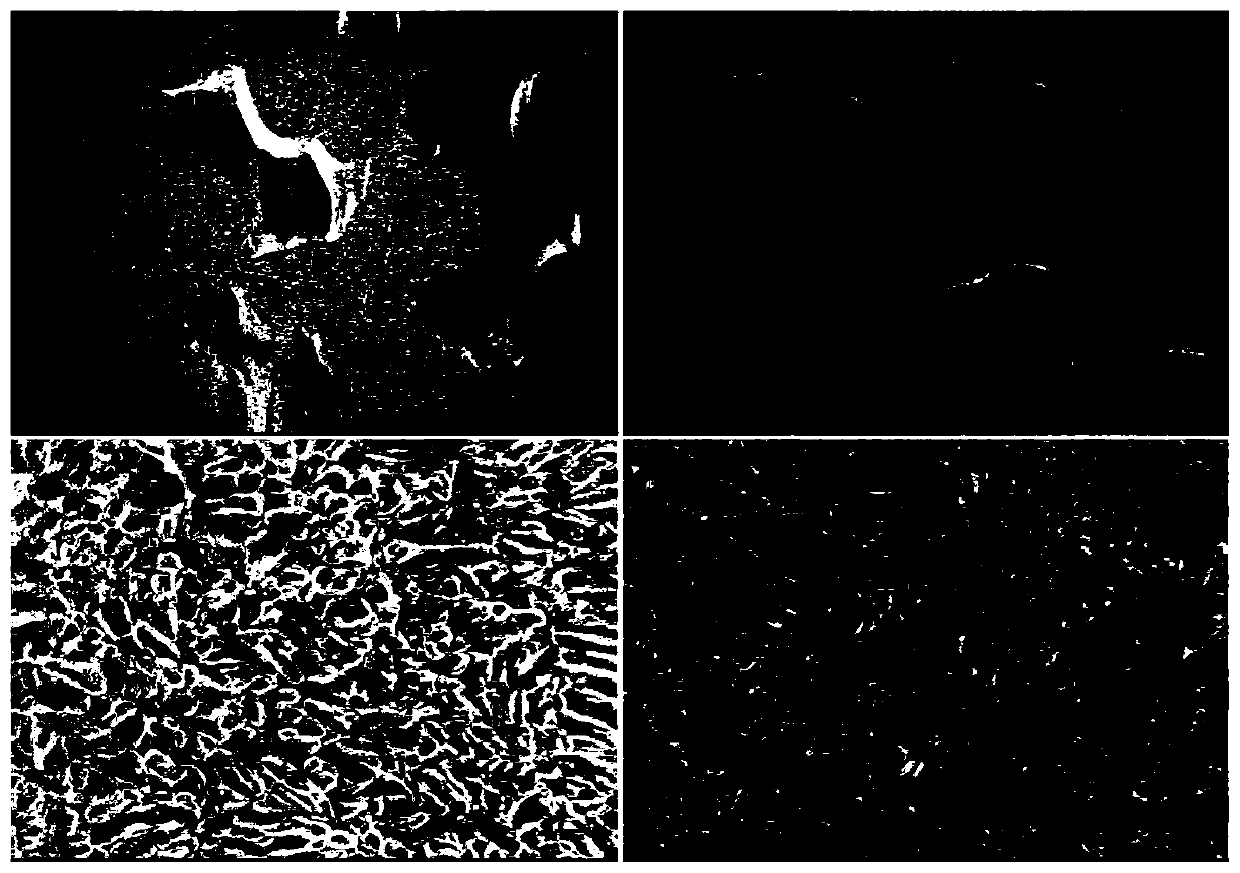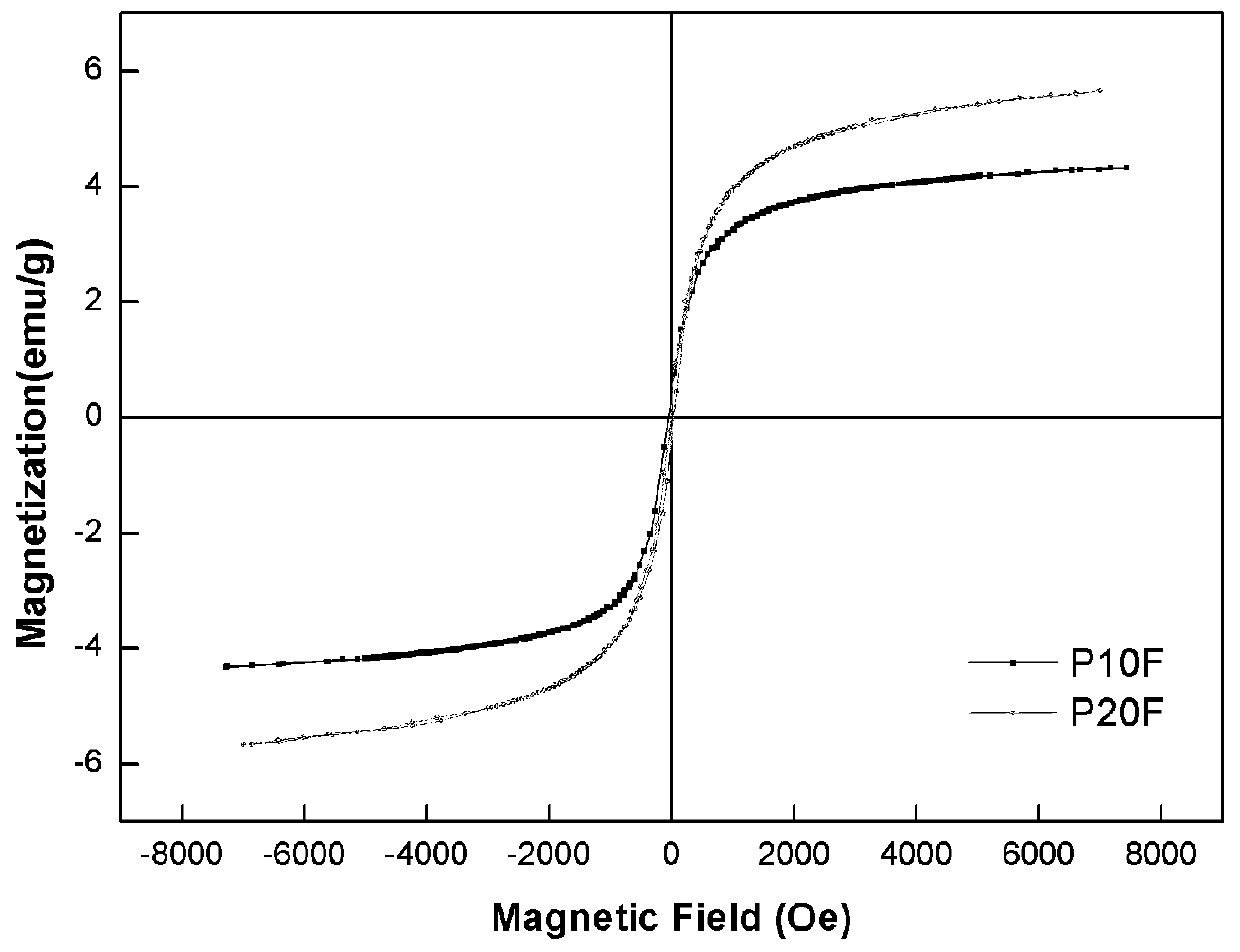Magnetic nanoparticle bone repair scaffold and preparation method thereof
A magnetic nanometer and magnetic nanoparticle technology, applied in the field of biomedical engineering, can solve the problems of postoperative complications of secondary injury, limited source of autologous bone, immune rejection, etc. Effects of blood vessel formation and bone formation promotion
- Summary
- Abstract
- Description
- Claims
- Application Information
AI Technical Summary
Problems solved by technology
Method used
Image
Examples
Embodiment 1
[0030] The magnetic nano-bone repair scaffold material of the present embodiment is made up of the following mass percentage components: 90% PLGA and 10% γ-Fe 2 o 3 nanoparticles.
[0031]The preparation method of the above-mentioned magnetic nano-bone repair scaffold comprises the following steps:
[0032] 1) According to the mass percentage, weigh 90% of PLGA and 10% of the nanoparticles with a particle size of 10nm and place them in a flask, then add 1,4-dioxane, and stir overnight at room temperature To form a homogeneous solution, wherein the concentration of PLGA in 1,4-dioxane is 0.14g / mL;
[0033] 2) Use SolidWorks software to design and create a model, for example, 1.4×1.4×1.4cm 3 The cube structure model, and export the data containing the SolidWorks model, and then use the layering software to process the data containing the SolidWorks model layered to obtain the layered data, and generate a CLI file;
[0034] 3) Add the homogeneous solution obtained in step 1) ...
Embodiment 2
[0037] The magnetic nano-bone repair scaffold material of the present embodiment is made up of the following mass percentage components: 80% PLGA and 20% γ-Fe 2 o 3 nanoparticles.
[0038] The preparation method of the above-mentioned magnetic nano-bone repair scaffold comprises the following steps:
[0039] 1) According to the mass percentage, weigh 80% of PLGA and 20% of the nanoparticles with a particle size of 10nm and place them in a flask, then add 1,4-dioxane, and stir overnight at room temperature To form a homogeneous solution, wherein the concentration of PLGA in 1,4-dioxane is 0.14g / mL;
[0040] 2) Use SolidWorks to design and create a model, for example, 1.4×1.4×1.4cm 3 The cube structure model, and export the data containing the SolidWorks model, and then use the layering software to process the data containing the SolidWorks model layered to obtain the layered data, and generate a CLI file;
[0041] 3) Add the homogeneous solution obtained in step 1) into the...
Embodiment 3
[0044] The method of this embodiment is basically the same as that of Example 1, except that the prepared magnetic nano-bone repair scaffold is composed of the following components by mass percentage: 95% PLGA, 5% γ-Fe 2 o 3 nanoparticles.
PUM
| Property | Measurement | Unit |
|---|---|---|
| Aperture | aaaaa | aaaaa |
| Particle size | aaaaa | aaaaa |
| Aperture | aaaaa | aaaaa |
Abstract
Description
Claims
Application Information
 Login to View More
Login to View More - R&D
- Intellectual Property
- Life Sciences
- Materials
- Tech Scout
- Unparalleled Data Quality
- Higher Quality Content
- 60% Fewer Hallucinations
Browse by: Latest US Patents, China's latest patents, Technical Efficacy Thesaurus, Application Domain, Technology Topic, Popular Technical Reports.
© 2025 PatSnap. All rights reserved.Legal|Privacy policy|Modern Slavery Act Transparency Statement|Sitemap|About US| Contact US: help@patsnap.com



